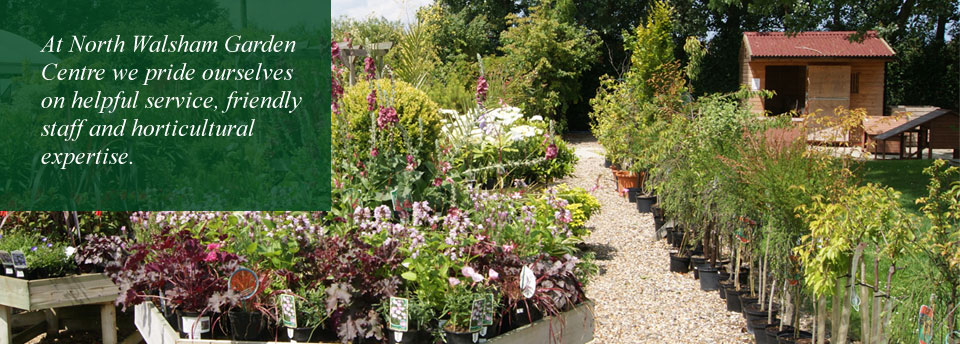Apr 5
What to do in the garden in April
UncategorizedThere’s always something to be doing in the garden, whether it’s pruning, tidying or sowing, so we’ve put together our top gardening tasks for April.
In the flower garden
- • Dig in a 5cm (or more) layer of compost or well rotted manure into your beds to prepare for the growing season. You can also work in a general purpose fertiliser such as pelleted chicken manure or fish, blood and bone.
- • Apply a layer of mulch around your perennials, trees and shrubs before the hot weather arrives. Use organic matter such as well rotted manure.
- • Feed trees, shrubs and hedges with a balanced, slow-release fertiliser by lightly forking it into the soil surface. Roses are greedy plants and will greatly benefit from feeding as they come into growth.
- • Lift and divide perennial plants now to improve their vigour and create new plants for your garden.
- • Divide Hostas before they come into leaf.
- • Divide Primroses after they have finished flowering.
- • You can start to move evergreen shrubs and trees now provided the soil isn’t frozen or waterlogged.
- • Plant summer-flowering bulbs such as Lilies, Gladiolus and Ranunculus into beds, borders and containers.
- • Continue to plant herbaceous perennials.
- • Forced flower bulbs such as hyacinths and daffodils, which have now finished flowering, can be planted outdoors in garden borders..
- • Hardwood cuttings taken last year may need planting or potting on now.
- • If any of your garden plants will need supporting this year, put the supports in now so the plants grow up through them. Adding supports afterwards is difficult and and may damage the plant.
- • Tie in climbing and rambling roses to their supports.
- • Honeysuckle and Clematis will now be putting on growth, tie in new stems to train the plant along its support.
- • Check any tree ties to make sure the tie is not cutting into the trunk. Loosen any that are tight to allow the trunk room to expand.
- • Prune your Penstemons now – cut all the old shoots back to the base provided there is new growth at the bottom of the plant. If there are no new shoots at the base, cut just above the lowest set of leaves.
- • If you haven’t done so already, finish cutting back any dead foliage left on your perennials and ornamental grasses to make way for new growth.
- • Prune Forsythia as soon as they have finished flowering, cutting back to strong young shoots.
- • Trim winter-flowering heathers as the flowers disappear, to prevent the plants becoming leggy.
- • Continue to remove any faded flowers from your winter pansies to stop them setting seed. This will encourage flushes of new flowers throughout the spring.
- • Deadhead daffodils and tulips as the flowers finish but leave the foliage intact allowing it to die back naturally.
- • Direct sow hardy annuals outside or in pots or modules.
- • Check that your container plants are not drying out – warm weather will quickly affect soil moisture levels.
In the vegetable garden
- • Dig in a 5cm (or more) layer of compost, well rotted manure or green waste into your beds to prepare for the growing season.
- • Plant your chitted potatoes outside in the ground or in potato grow bags.
- • Harvest asparagus spears when they are no more than 18cm tall.
- • For quick and easy pea supports push some twiggy sticks around your pea plants now.
- • Thin your carrot seedlings to achieve good-size carrots – do this in the evening when fewer carrot flies are around.
- • Prepare vegetable seed beds by removing all weeds and forking in plenty of compost. Cover prepared soil with sheets of black plastic to keep it drier and warmer in preparation for planting.
- • Many crops can be direct sown into the ground now including parsnips, cabbages and radishes
- • Build raised beds to take the bending out of growing vegetables.
In the fruit garden
- • Plant out strawberry beds, making sure you enrich the soil first with plenty of well-rotted manure. Place cloches over your strawberry plants for earlier crops.
- • Protect your fruit blossom from late frosts by covering with frost fleece at night.
- • Spray the emerging leaves of peach and nectarine trees with Bordeaux mixture to prevent peach leaf curl. Sheltering your plants from the rain will also reduce the risk of peach leaf curl.
- • Mulch fruit trees with well rotted manure or garden compost taking care not to mound mulch up around the trunk. Top-dress patio dwarf fruit trees with fresh compost and a slow-release fertiliser
- • Apply a slow release fertiliser around the base of your raspberry canes, fruit bushes and fruit trees to encourage good crops this season.
- • Try hand-pollinating your peaches and nectarines with a soft-bristled paint brush for better crops this year.
In the greenhouse
- • If you haven’t already, give your greenhouse a thorough scrub with hot soapy water to get rid of pests and diseases and to let more light in.
- • Start to sow tomato seeds indoors, ready to plant out after all risk of frost has passed. If you’re struggling for growing space buy ready-grown tomato plants.
- • Continue to sow half-hardy annual seeds under cover – take care not to expose them to frost.
- • Keep an eye on your seedlings – as soon as they have their first true leaves, prick them out into pots or modules for growing on.
- • If your greenhouse is heated, plant up your summer hanging baskets with plug plants now and keep them under cover until all risk of frost has passed.
- • Pinch out the tips of fuchsia shoots and sweet pea plants to encourage bushy plants this summer.
Looking after your lawn
- • Sow lawn seed now on well prepared soil and keep the soil moist whilst the seed is germinating.
- • For an instant lawn, lay new turf now and ensure it is kept moist until established.
- • Repair any bare patches in your lawn.
- • Apply a high nitrogen fertiliser to your lawn now for a boost to the start of the season.
- • Now is a good time to apply specialist lawn weed killers to your lawn where moss and weeds are a problem.
- • On dry days, brush away any worm casts on the lawn.
- • Mow your lawn more regularly as required, mower blades can be lowered towards the end of the month.
- • Recut lawn edges to straighten them up. Try installing lawn edging to make future maintenance easier.
- • Aerate compacted areas of lawn by spiking it with a garden fork.

